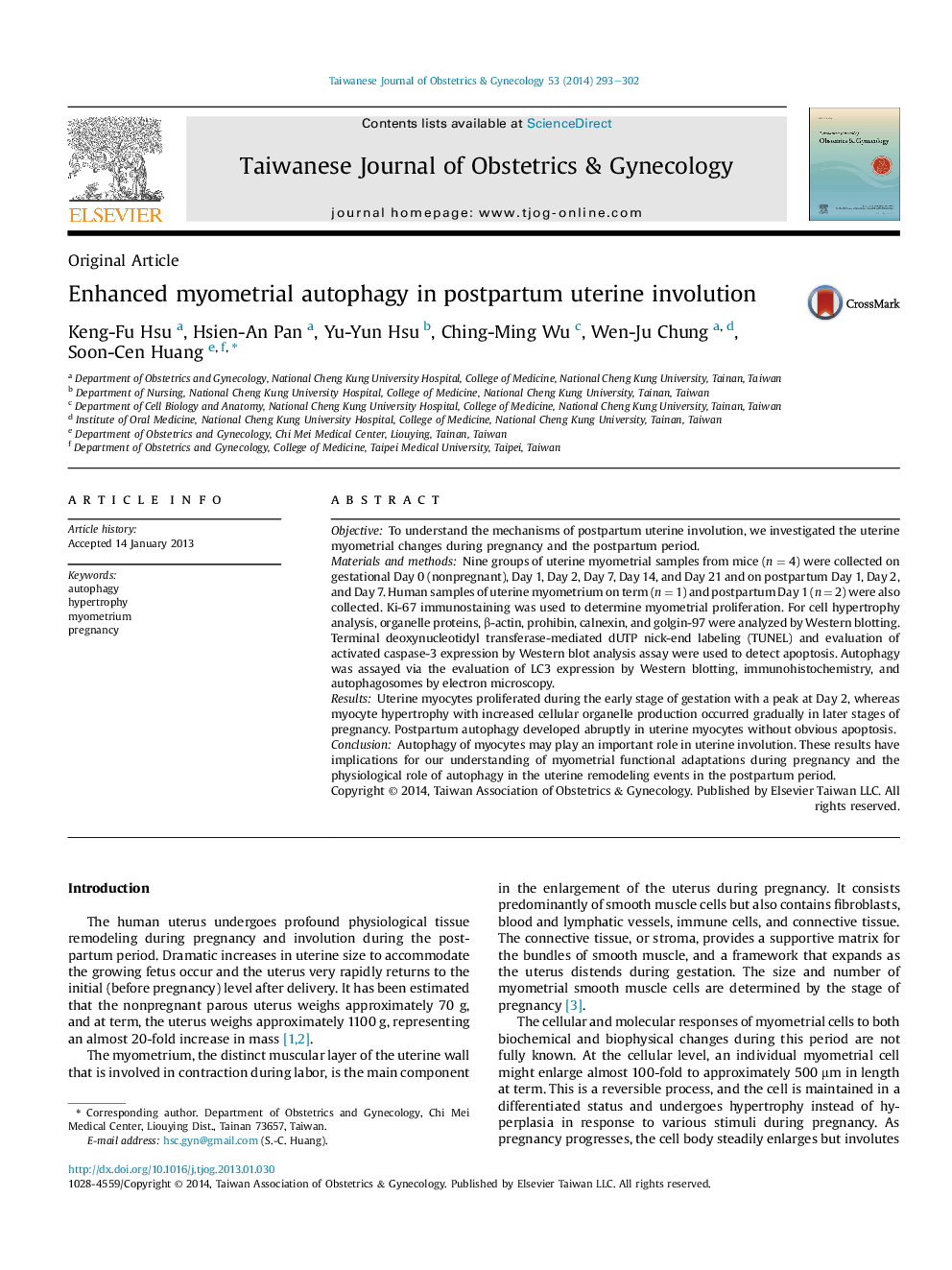| Article ID | Journal | Published Year | Pages | File Type |
|---|---|---|---|---|
| 3975195 | Taiwanese Journal of Obstetrics and Gynecology | 2014 | 10 Pages |
ObjectiveTo understand the mechanisms of postpartum uterine involution, we investigated the uterine myometrial changes during pregnancy and the postpartum period.Materials and methodsNine groups of uterine myometrial samples from mice (n = 4) were collected on gestational Day 0 (nonpregnant), Day 1, Day 2, Day 7, Day 14, and Day 21 and on postpartum Day 1, Day 2, and Day 7. Human samples of uterine myometrium on term (n = 1) and postpartum Day 1 (n = 2) were also collected. Ki-67 immunostaining was used to determine myometrial proliferation. For cell hypertrophy analysis, organelle proteins, β-actin, prohibin, calnexin, and golgin-97 were analyzed by Western blotting. Terminal deoxynucleotidyl transferase-mediated dUTP nick-end labeling (TUNEL) and evaluation of activated caspase-3 expression by Western blot analysis assay were used to detect apoptosis. Autophagy was assayed via the evaluation of LC3 expression by Western blotting, immunohistochemistry, and autophagosomes by electron microscopy.ResultsUterine myocytes proliferated during the early stage of gestation with a peak at Day 2, whereas myocyte hypertrophy with increased cellular organelle production occurred gradually in later stages of pregnancy. Postpartum autophagy developed abruptly in uterine myocytes without obvious apoptosis.ConclusionAutophagy of myocytes may play an important role in uterine involution. These results have implications for our understanding of myometrial functional adaptations during pregnancy and the physiological role of autophagy in the uterine remodeling events in the postpartum period.
